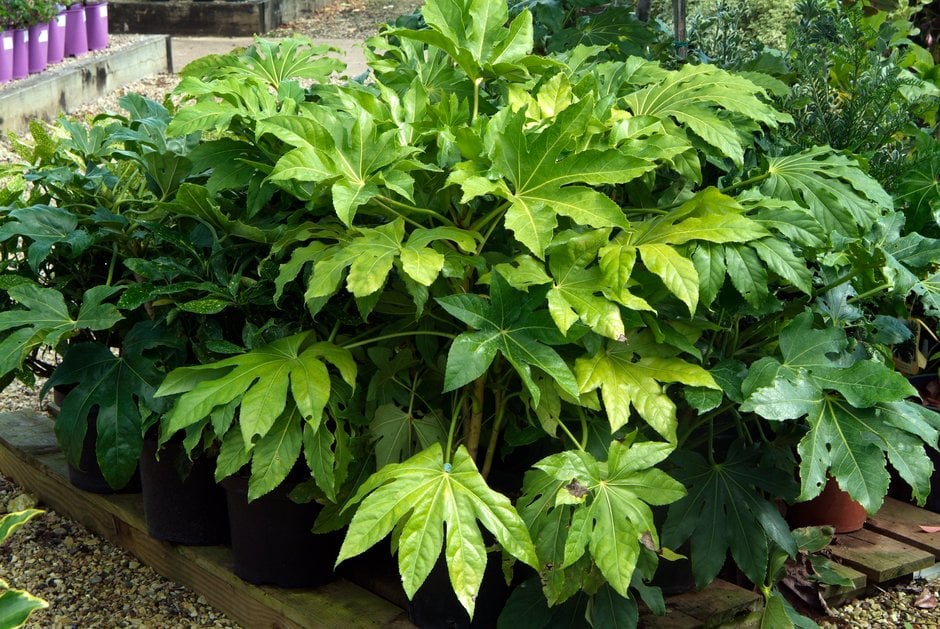Fatsia japonica

Japanese aralia
A medium-sized evergreen shrub of open, spreading habit, with palmately-lobed leaves to 45cm in width and clusters of small, white, globose flowers followed by small, black fruits
Size
Ultimate height
2.5–4 metresTime to ultimate height
10–20 yearsUltimate spread
2.5–4 metresGrowing conditions
Moisture
Moist but well–drainedpH
Acid, Alkaline, NeutralColour & scent
| Stem | Flower | Foliage | Fruit | |
| Spring | Green | |||
|---|---|---|---|---|
| Summer | Green | |||
| Autumn | White | Green | Black | |
| Winter | Green |
Position
- Full shade
- Full sun
- Partial shade
Aspect
West–facing or South–facing or East–facing
Exposure
Sheltered Hardiness
H5Botanical details
- Family
- Araliaceae
- Native to GB / Ireland
- No
- Foliage
- Evergreen
- Habit
- Suckering
- Potentially harmful
- Fruit are ornamental - not to be eaten. Wear gloves and other protective equipment when handling Pets: Fruit are ornamental - not to be eaten - see the HTA guide to potentially harmful plants for further information and useful contact numbers
- Genus
Fatsia are evergreen shrubs with stout, sparsely branched stems bearing large, leathery, palmately lobed leaves and small white flowers in terminal compound umbels, followed by small black fruits
- Name status
Correct
- Plant range
- Japan, South Korea
How to grow
Cultivation
Grows best in moist but well-drained soil in full sun or partial shade; can tolerate full shade
Propagation
Propagate by semi-hardwood cuttings
Suggested planting locations and garden types
- Cottage and informal garden
- Architectural
- City and courtyard gardens
- Wildlife gardens
- Low Maintenance
Pruning
Pests
May be susceptible to scale insects, thrips and mealybugs
Diseases
May be susceptible to a leaf spot and honey fungus
Get involved
The Royal Horticultural Society is the UK’s leading gardening charity. We aim to enrich everyone’s life through plants, and make the UK a greener and more beautiful place.
